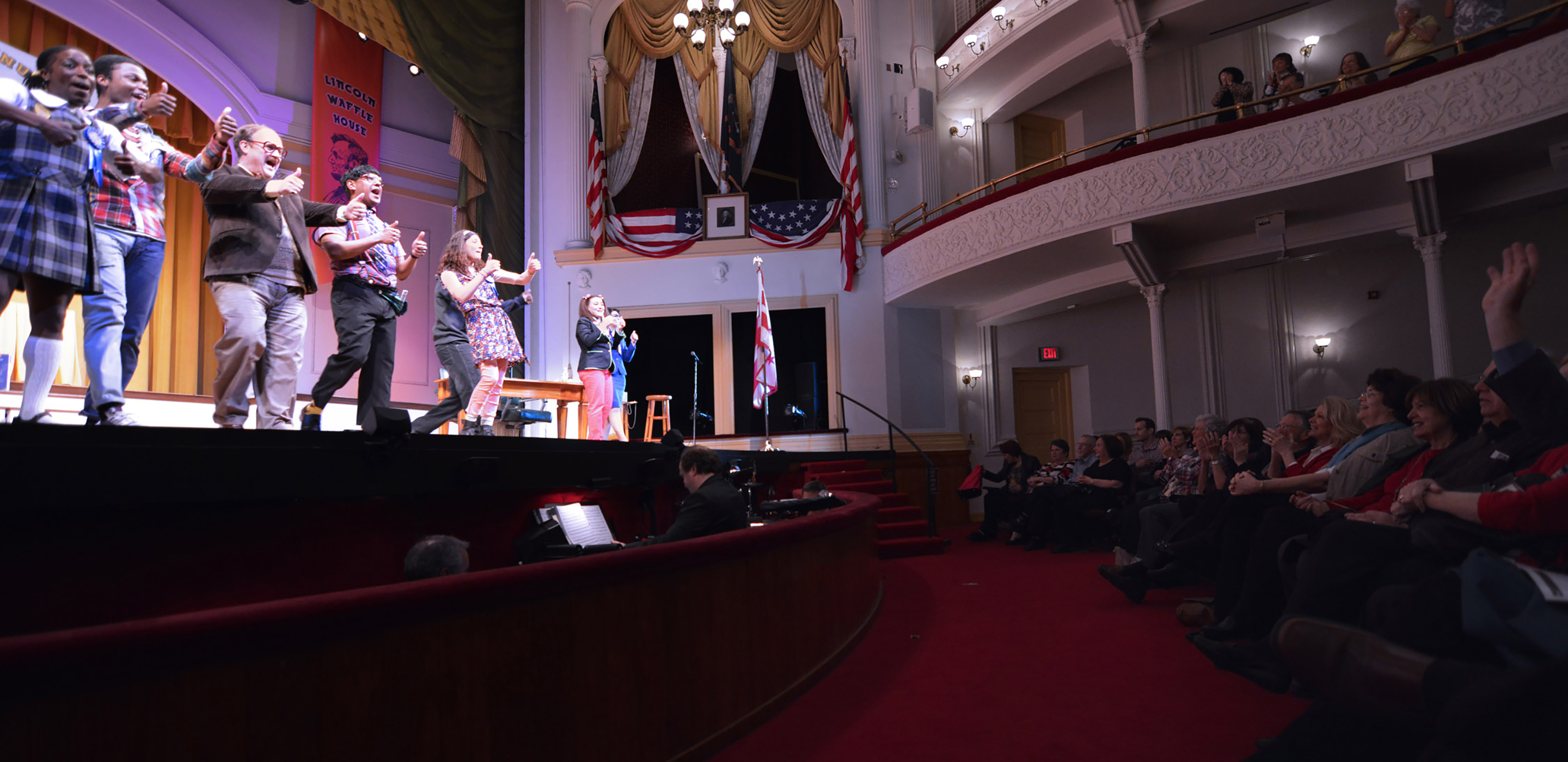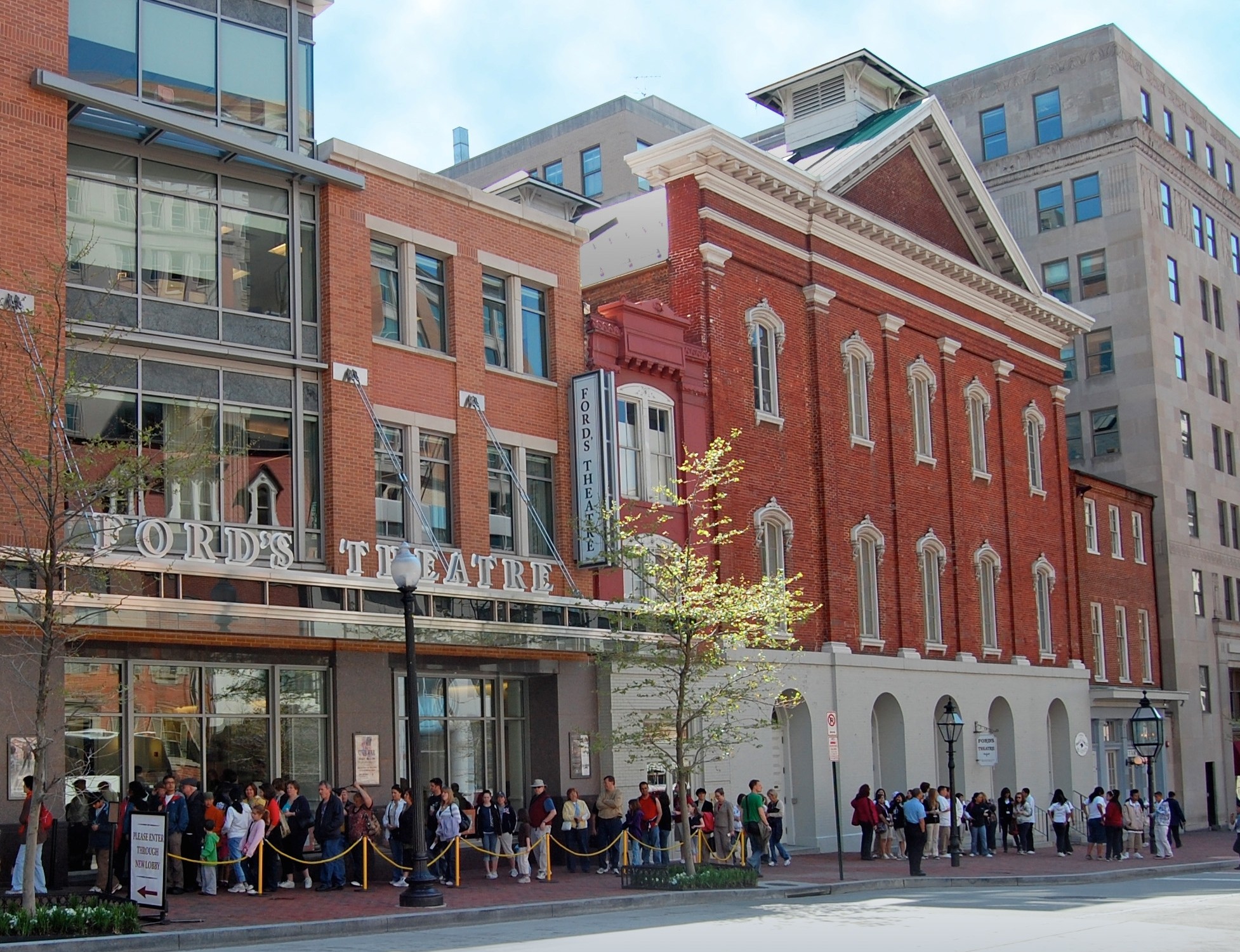
Evaluating Accessibility at Ford’s Theatre
In spring 2017, we learned about an opportunity to apply for the Museums Empowered grant through the Institute of Museum and Library Services (IMLS). The grant seemed like a perfect opportunity to support our efforts to increase access to the historic site experience.

Our goal was to put together a team of Access Advisers who are experts in the field. We would bring them to Ford’s for a two-day workshop where they could help us assess our needs and brainstorm solutions. Our final team of advisers included:
- Beth Prevor, Co-founder and Executive Director, Hands On
- Jan Majewski, Director of Inclusive Cultural and Educational Projects, Institute for Human Centered Design
- Vanessa Jones, Access Programs Specialist, National Portrait Gallery, Smithsonian Institution
- Mark Osterman, Adult Learning and Engagement Manager, Vizcaya Museum and Gardens
- Lesley Henry Kadish, Fellow, Smithsonian Accessibility
- Sina Bahram, President and Founder, Prime Access Consulting
In October 2017, we learned we had received the grant. We had already held two dates on the advisors’ calendars, so we quickly moved forward with creating an outline for the two-day workshop.
The first day of the workshop focused on orienting the advisers to Ford’s Theatre and how we operate. Ford’s Theatre staff shared as much information as possible about our historic site visit experience, the constraints we work within and the current offerings we have for visitors with disabilities.
Before we moved from the conference room to the floor for a site visit, there was a brief introduction of the Personas we would use to ensure we were thinking inclusively for all visitors. Personas are fictional characters that are created based upon patron research to represent different visitor types. Due to our time constraint, we were given permission to modify the personas created by the Boston Museum of Science for their own access initiative.
We also asked our advisers to keep two questions in mind:
- What are our biggest omissions or missed opportunities?
- What do you see as our biggest challenges?
At the conclusion of the tour, we reconvened in our meeting space to hear the advisers. They had so many insightful comments! You can see the photos below of what they said, but here are a few of the key points:
Missed Opportunities:
- Communication of what visitors can expect on site regarding accessibility
- Transparency about the space, the visit and, in general, why things are the way they are.
- Access to content
Biggest Challenges:
- Concurrent path for visitors with and without disabilities
- Audio bleed and visitor noise
- Clarity of orientation for visitors with disabilities/all visitors
We asked our advisers to select one of the Personas we had reviewed earlier to use on day two of the workshop. We hoped this would help us define solutions to provide equal access, our conclusion from day one.
Before the advisers returned for day two, the Ford’s team took the notes from the previous day and split the recommendations into four categories:
- Pre-Visit Communication
- On-Site Orientation
- Communication during a visit
- Institutional Buy in and Awareness
We were intrigued to see how many of the ideas fit into multiple categories. When the advisers arrived, they split into small groups based on the personas they were assigned. They then brainstormed and recorded the following for each persona:
- What solutions should we offer to accommodate your persona’s needs?
- What do we need to do to make your persona feel welcome at Ford’s Theatre?
- What institutions are doing this (the solution) well?
Using a Kano model, we then asked the small groups to prioritize the solutions from low resource to high resource and from short term to long term. The small groups then shared a few of their ideas with the larger group.

Although staff training will take place at a later date, we worked a conversation about staff training into the workshop so we could have input from outside perspectives. We asked the advisers to think about their experience with trainings that they either led or attended and asked the following questions to help guide the conversation:
What are the best and worst trainings and why?
What are the most important aspects of staff training?
What are the biggest pitfalls/risks we should plan to mitigate with training?
What organizations are doing a great job with training?
We were so thankful for the time, dedication and thoughtfulness of our advisors. Their two days of work provided us with an exciting list of next steps. After the workshop, our team reconvened to review all of the solutions they had recommended. We then put together a first draft of a roadmap to access solutions at Ford’s Theatre.
The roadmap is organized by the following project types:
- On Site Materials and Resources
- Physical Accommodations
- Staff Training
- Programming
- On Site Wayfinding
- Website
- Exhibits
Being able to categorize these action items and put them into a timeline was extremely helpful, especially for planning our staff training in February. The roadmap is currently in our advisors’ hands for edits, and we are excited to see what they think!
Allison Alonzy is Associate Director of Visitor Operations at Ford’s Theatre.

